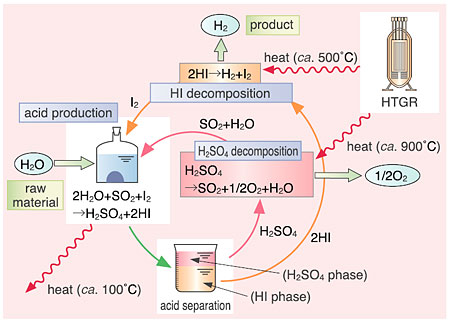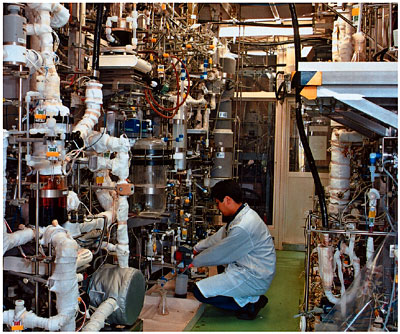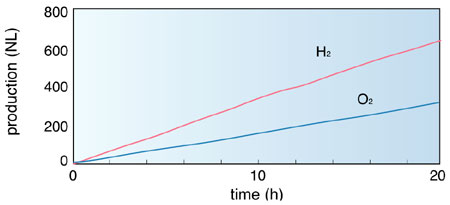We have been conducting R&D on hydrogen (H2) production technologies using nuclear energy to obtain a large-scale, economical H2 production process that is environmentally friendly. Among the H2 production methods that split water using heat from a HTGR, the iodine and sulfur (IS) process has attracted worldwide interest.
The demonstration of a stable, long-term, continuous closed-cycle operation is indispensable in industrializing this process. To achieve this operation, maintaining a balance of reacting constituents of the three chemical reactions is essential. In this operation, all chemicals except water (H2O), H2, and oxygen (O2) must circulate through the process (Fig. 1-6) without being discharged. A new control method was developed to maintain the acid production solution composition in a stable state, which is vital to obtain this balance. A H2 production test using the experimental facility (Fig. 1-7) was performed to verify the control method.
The acids produced during acid production separate into two phases, the hydriodic acid (HI) phase, and the sulfuric acid (H2SO4) phase. These acids were periodically sampled during the test and analyzed. Their compositions were found to remain at nearly regular mole fractions. This confirms the suitability of the control method and H2 production for 20 h were successfully accomplished (Fig. 1-8).
This R&D was conducted under a contract between JAERI and the Ministry of Education, Culture, Sports, Science and Technology of Japan.
|


